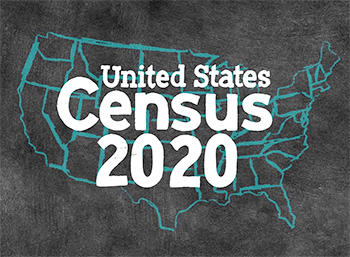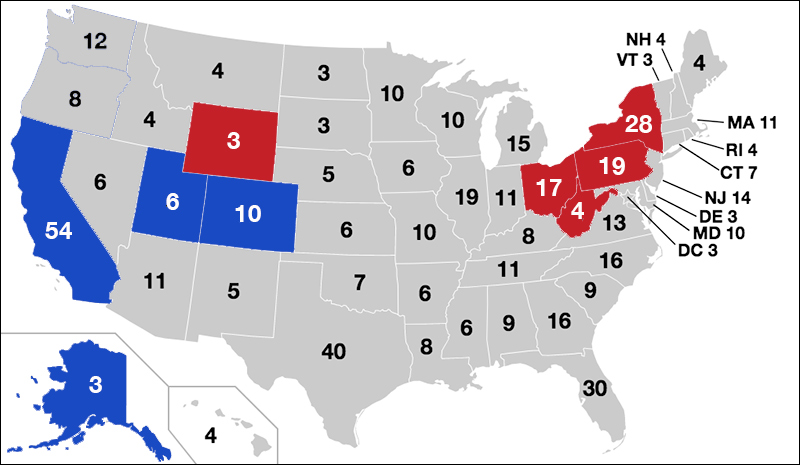By Jim Ellis — Wednesday, Oct. 11, 2023
President
Kennedy’s Independent Gambit: Potential Game-Changer — The 2024 presidential campaign may have dramatically changed this week. Though Robert F. Kennedy Jr.’s announcement to run as an Independent was expected, it is unclear just how he will affect next year’s general election.At a rally event in Philadelphia on Monday, Kennedy officially declared his presidential candidacy as an Independent. He answered two major questions with his speech. First, he will run as an Independent candidate and not as the nominee of a minor party. Second, he is not running to be a spoiler in a race between President Joe Biden and former President Donald Trump but will campaign to win.
Saying his “smoldering movement” wants to “ … reclaim democracy, resurrect the promise of our republic, the promised land,” Kennedy ended his Democratic primary challenge to President Biden and now moves to implement a general election strategy.
He will first face an uphill battle to secure ballot placement in all 50 states and the District of Columbia. This is an expensive proposition, but time, rather than money, might be his bigger obstacle since the window to accomplish the large task is small.
Though Kennedy may be in the race to win, the chance of any non-major party nominee or candidate winning a majority of Electoral College votes is a long shot to say the least, even for a man named Kennedy.
It does appear, however, that he will attract a significant number of votes, which could throw a key state to either President Biden or former President Trump, thus altering the national campaign outcome.
In looking at a Kennedy candidacy, we analyze which states might be receptive to his campaign. Naturally, considering the Kennedy family history in New England, he could see some success in a couple of the northern domains. While the Kennedy home state of Massachusetts would still be a lock for President Biden, its neighbor to the north, New Hampshire, could be a different story.
In 2020, Biden scored a 52.7 – 45.3 percent victory margin over Trump (a spread of 59,277 votes) in the Granite State, with third party or Independent candidates attracting two percentage points (translating into a raw number of 15,625 votes). If Kennedy could approach the 10 percent range (approximately 80,000 votes based upon New Hampshire’s 2020 turnout figure), the outcome could change from Biden winning the state to Trump. Under this model, Biden would have to lose 14 percent of his aggregate vote to Kennedy while Trump could lose no more than five percent of his total.
If Kennedy’s presence in the race would throw New Hampshire to Trump, the state’s four electoral votes switching might make a difference. For example, a combination of Georgia, Arizona, Nevada, and New Hampshire switching to Trump would give the former president 272 electoral votes, or two more than the bare minimum required to secure the presidency.
Maine could be another state where Kennedy would have the ability to draw some votes. In addition to the state splitting its electoral votes to the point where the individual congressional districts carry their own tally, Kennedy scoring into double digits in Maine’s 1st District could transform the final vote.
Even though the aggregate 1st District vote would still go to Biden, the closer finish coupled with a solid Trump win in the 2nd CD, might be enough to cast the statewide total Trump’s way and award the Republican three electoral votes instead of the one he has received in the past two elections.
Alaska is a place where the Kennedy presence could turn a state President Biden’s way. In 2020, Trump carried the state with 52.8 percent of the vote as compared to Biden’s 42.8 percent. Under the state’s Ranked Choice Voting system, the tables could turn if the leading candidate drops below 50 percent.
In 2020, 4.4 percent of the Alaska electorate chose a minor party or Independent candidate. Kennedy’s candidacy could easily see the latter percentage increase rather substantially, and most of his vote coming from the Trump total would force multiple rounds of Ranked Choice voting. This, in the end, would almost assuredly favor President Biden.
Kennedy already has two key attributes that almost none of the minor party or Independent candidates have, which is universal name identification and access to enough money to run a credible outreach campaign. Having these two points in his favor makes him a different type of Independent candidate, and thus should have the ability to attract a higher number of votes when compared to past non-major party candidates.
How the Kennedy candidacy ultimately affects the 2024 presidential race is clearly undetermined at this time, but he will have the opportunity of making his mark on this election.







